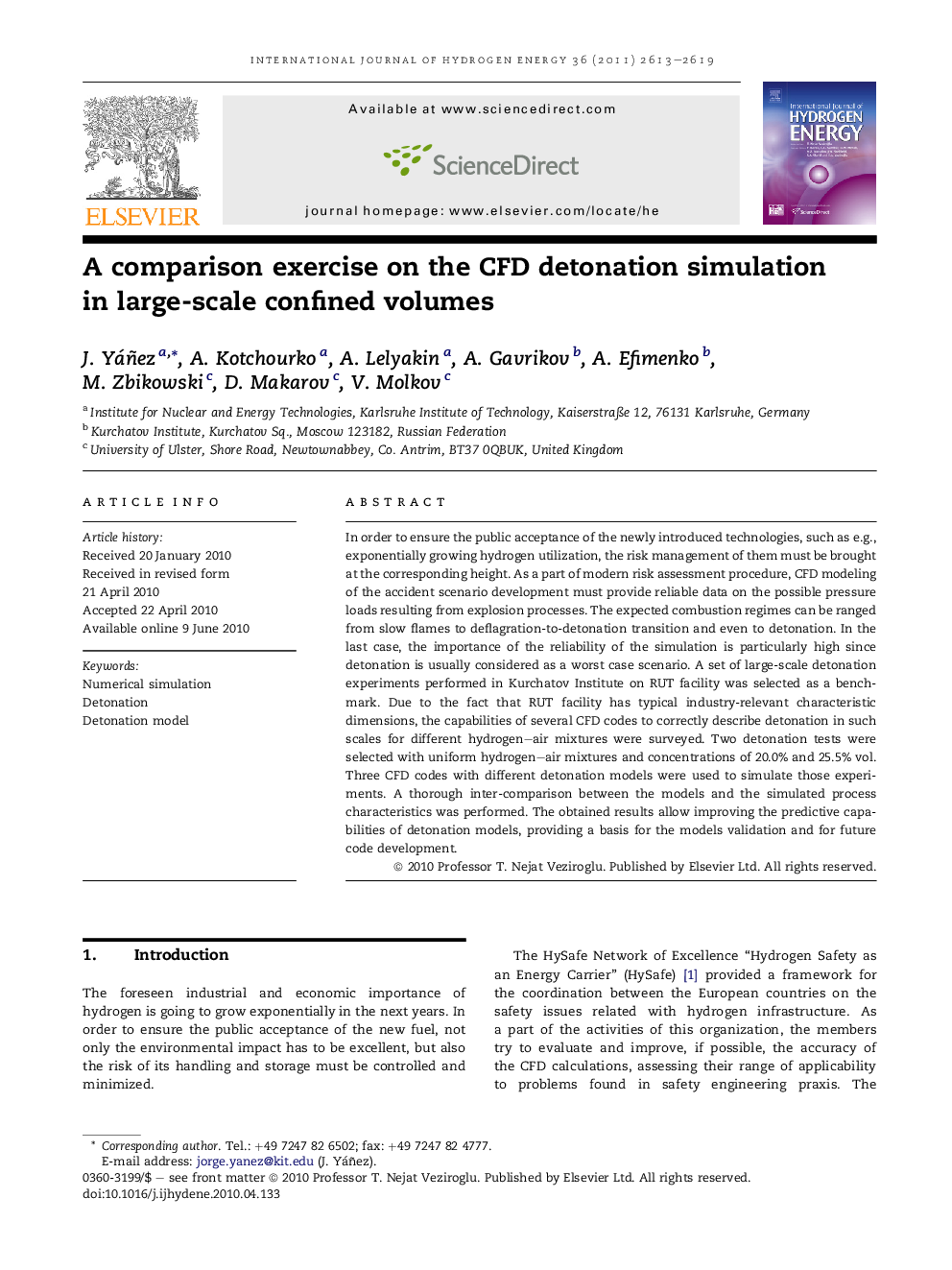| Article ID | Journal | Published Year | Pages | File Type |
|---|---|---|---|---|
| 7724575 | International Journal of Hydrogen Energy | 2011 | 7 Pages |
Abstract
In order to ensure the public acceptance of the newly introduced technologies, such as e.g., exponentially growing hydrogen utilization, the risk management of them must be brought at the corresponding height. As a part of modern risk assessment procedure, CFD modeling of the accident scenario development must provide reliable data on the possible pressure loads resulting from explosion processes. The expected combustion regimes can be ranged from slow flames to deflagration-to-detonation transition and even to detonation. In the last case, the importance of the reliability of the simulation is particularly high since detonation is usually considered as a worst case scenario. A set of large-scale detonation experiments performed in Kurchatov Institute on RUT facility was selected as a benchmark. Due to the fact that RUT facility has typical industry-relevant characteristic dimensions, the capabilities of several CFD codes to correctly describe detonation in such scales for different hydrogen-air mixtures were surveyed. Two detonation tests were selected with uniform hydrogen-air mixtures and concentrations of 20.0% and 25.5% vol. Three CFD codes with different detonation models were used to simulate those experiments. A thorough inter-comparison between the models and the simulated process characteristics was performed. The obtained results allow improving the predictive capabilities of detonation models, providing a basis for the models validation and for future code development.
Keywords
Related Topics
Physical Sciences and Engineering
Chemistry
Electrochemistry
Authors
J. Yáñez, A. Kotchourko, A. Lelyakin, A. Gavrikov, A. Efimenko, M. Zbikowski, D. Makarov, V. Molkov,
